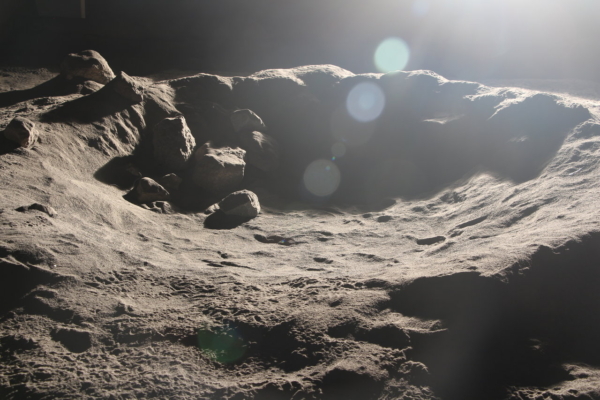In the latest development in space exploration, German scientists have proposed a groundbreaking idea for generating sustainable power on the Moon. Traditionally, establishing a base on the lunar surface involved the complex task of transporting bulky solar panels via spacecraft, or exploring alternative power generation methods to ensure a stable energy supply. However, the innovative approach taken by researchers aims to use materials already present on the Moon to create solar panels, specifically solar glass, thus reducing transportation costs and achieving the goal of lunar power generation.
With figures like Elon Musk enhancing space technology through advancements in rocketry and the endeavours of other companies, the Moon and Mars have emerged as prime destinations for future space exploration and travel. Consequently, the establishment of safe and sustainable space bases on these celestial bodies has become a critical focus for space agencies worldwide.
Building a space base currently requires solutions to energy production issues, with considerations such as lightweight design, reliability, and cost-effectiveness being paramount. Historically, most planetary missions have relied on solar panels as the primary power source, which is linked to their energy conversion efficiency exceeding 30%. However, the inefficient nature of transporting these panels via spacecraft can lead to exorbitant costs, reaching approximately $1.1 million per kilogram.
To address this issue, a collaborative research team comprising experts from the University of Potsdam, TU Berlin, University of Salerno in Italy, among others, has discovered a method of using lunar regolith (moon dust) to create lunar glass for calcium titanate solar panels. This innovation has the potential to significantly reduce the cost of transporting solar panels via spacecraft, thereby making long-term habitation on the Moon more feasible. The findings of this research were published in the journal “Cell Press” in April.
The “moon dust” they utilized is rich in rock components such as calcium, aluminum, iron, magnesium, along with abundant silicon dioxide (SiO2) suitable for glass production. “Perovskite,” a type of calcium titanate compound, is known for being an inexpensive and easily manufacturable material with high energy conversion efficiency, making it a focal point in solar panel research and application.
The research team melted the simulated lunar regolith material into “lunar glass” and paired it with calcium titanate to create a novel type of solar panel. When subjected to solar-grade radiation, the lunar glass solar panels outperformed their Earth-manufactured counterparts in testing.
The main reason for this efficiency is that Earth-made solar glass tends to yellow and lose sunlight transmittance and power generation efficiency in the harsh radiation of space. The inherent impurities in the lunar regolith give the “lunar glass” a natural brown hue, serving to stabilize the glass color and enhance its radiation resistance.
Moreover, the research team found that the manufacturing process for lunar glass is straightforward and does not require complex purification processes. By simply focusing sunlight, the lunar regolith can be melted to the required temperature for lunar glass production. Through adjustments in glass thickness and battery composition, the lunar glass calcium titanate solar panels achieved around 10% electrical conversion efficiency. If the lunar glass is clear and transparent enough, coupled with special nano-coatings, the energy conversion efficiency can be increased to 23%.
However, scientists acknowledge that the process of manufacturing lunar glass on the Moon may present unconventional challenges not encountered on Earth. Concerns arise from the Moon’s low gravity potentially affecting glass formation, the potential failure of calcium titanate solvents in the lunar vacuum, and the threat posed to material stability by drastic temperature changes.
To validate the feasibility of this approach, the research team hopes to conduct lunar glass experiments in a real moon environment with astronauts in the future to confirm its practical application potential.
One of the lead authors of the research and Chief Research Officer of calcium titanate solar cells at the University of Potsdam, Dr. Felix Lang, stated to the newsroom of “Cell Press,” “The solar energy conversion efficiency of the solar panels currently used in space can reach 30% to 40%, but their heavy glass or thick foil coverings make mass space transport challenging.”
Dr. Lang further elaborated, “If the weight is reduced by 99%, there will be no need to transport ultra-efficient batteries, only the fabrication of such batteries on the Moon will suffice. The solar glass we have developed is stronger in radiation resistance compared to other solar glasses and does not degrade over time.”
Moreover, Dr. Lang explained, “In the past, scientists focused on using extracted water as fuel for powering space bases on the Moon. Now, using lunar dust to create solar panels might potentially provide the necessary energy for future lunar cities.”
This research received support from the Volkswagen Foundation, the largest private non-profit organization in Germany dedicated to promoting and supporting academic research, and was funded through the Freigeist Q14 program.

